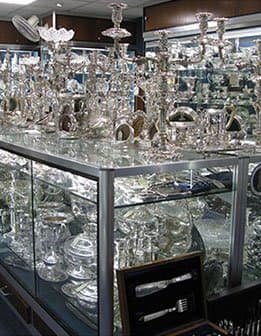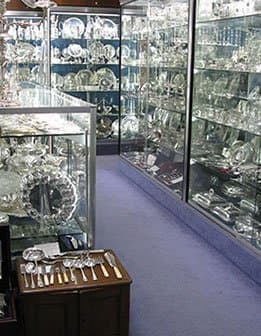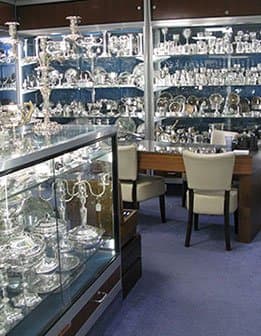I am often asked what the value of Georgian silver in the 18th century was and how much did items of silverware cost to make. To determine this answer from a modern perspective, one must establish the cost of the raw material (i.e. silver) and then ally that to the cost of workmanship. The easiest way to establish this is to find a relatively standard item – which is still being made today – and comparing it with the price of the same item in the 18th century.
The next calculation, which is somewhat trickier, is to adjust all this to over two centuries of inflation. To assist me in my quest for the answer, I have used an extract from a cutlery retailers bill from 1787 and compared it with the cost of the same items today.
As to how much should be adjusted for the increase in prices since 1787, I have referred to the work of Professor Robert D Hume who calculated in 2014, that the adjusted buying power for the period in question should be in the 200 – 300 times range. Seeing that there has been about 10 percent cumulative inflation since 2014 – 2021, I have therefore decided to use a multiplier of 275 times. This is somewhat interesting as the price of gold in 1787 was £4.23 per ounce, and if one multiplies this by 275 times, one gets to a figure of £1,163 per ounce (the actual price on April 25th 2021 is £1280 per ounce). From this we can see that gold has pretty much maintained its purchasing power.
Moving on to silver, the price of an ounce of silver was approximately just over 5 shillings (about 27 pence per ounce in modern money). This computes to about £75 per ounce and from this we can establish, that unlike gold – which has broadly maintained its purchasing power – silver (£18.70 per ounce on April 25th, 2021) has lost about three quarters of its purchasing power since 1787.
Having established the relative price of silver we must now compare the cost of labour needed to hand forge the silver into the finished article. For this purpose, I am comparing the price of a thread pattern tablespoon from the retailers bill of 1787 and comparing it to an equivalent hand forged modern equivalent (not the much cheaper and inferior machine stamped and hand finished cutlery that is made in over 95 percent of instances today).
From the 1787 bill, we see that 24 double threaded tablespoons cost £29.50 for 24 (£1.23 each) approx. £338 per piece today. Knowing that the weight of each spoon is 2.37 troy ounces, we can establish that the silver was around £178 to make the spoon and the labour around £160 – showing that the silver component was worth slightly more than the cost of labour.
This is the hallmark for the illustrated Georgian silver spoon made by George Smith and William Fearn, one of the largest manufacturers of flatware in the 18th century.
Approximately £178 in today’s money for the silver and around the same for labour. Today the silver value is a mere fraction of the finished value. The silver component is around £44 and the labour component almost ten times the raw material cost (£436). So where does this leave us? I have cross referenced my findings with other articles and have worked out that labour was approximately three times cheaper in 1787 than it is today.
Have you ever wondered why modern buildings and many other items are so dull and devoid of craftsmanship? Cost! When we come to the actual value of the 1787 spoon today, I would sell the 1787 original spoon for around £80 – £90, which, I suppose, tells us how undervalued old silver is compared to its new equivalent… And indeed its original 1787 price and how daft it would be from a financial point of view to purchase newly made spoons and forks! It would seem somewhat crazy to buy a hand-forged new spoon for £480 when one can buy its historic 1787 equivalent for £80 – £90.
In my next musings I shall try to update the new price of silver from the 1930s into a modern context using my Grandfather’s 1931 manufacturers’ price list. One thing that is rather amazing is that by 1931, the real price of silver in today’s prices (2021) had collapsed from a price of £75 in 1787 to a price of approximately £7 to £10 per ounce during the 1930s.
Our Makers
An A to Z list of silversmiths featured on our website
About Us
If you see something in Archive that you would have liked please contact us as we might be able to source
Our Store
Our store is situated in vaults 3 and 5 on the right-hand side of the main corridor at The London Silver Vaults






